
This video offers some advice on using notecards during the types of speeches often given in public speaking classes.
- Subject:
- Business and Communication
- Communication
- Material Type:
- Lecture
- Author:
- Ryan Guy
- Date Added:
- 06/02/2022

This video offers some advice on using notecards during the types of speeches often given in public speaking classes.
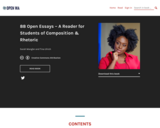
This collection is intended to provide instructors with a wide variety of nonfiction examples of good writing that they can use to teach composition.
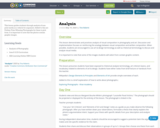
This lesson guides students through analysis of non-print media as a vehicle for argument.
Added to this are Pulitzer Prize Winning Photographs for them to pick from. It is important to note that the photos contain graphic images.

This lesson guides students through analysis of non-print media as a vehicle for argument.
Added to this are Pulitzer Prize Winning Photographs for them to pick from.
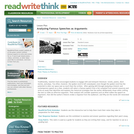
Students are often asked to perform speeches, but rarely do we require students to analyze speeches as carefully as we study works of literature. In this unit, students are required to identify the rhetorical strategies in a famous speech and the specific purpose for each chosen device. They will write an essay about its effectiveness and why it is still famous after all these years.
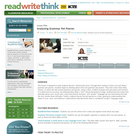
By analyzing Dear Abby's rant about bad grammar usage, students become aware that attitudes about race, social class, moral and ethical character, and "proper" language use are intertwined.
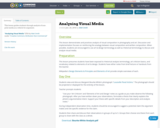
This lesson guides students through analysis of non-print media as a vehicle for argument.
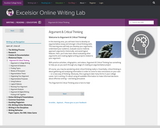
In this learning area, you will learn how to develop an argumentative essay and stronger critical thinking skills. This learning area will help you develop your arguments, understand your audience, evaluate source material, approach arguments rhetorically, and avoid logical fallacies. Here, you’ll also learn about evaluating other arguments and creating digital writing projects related to your argument.

Online OER text adapted for use in ENGL 101 - Rhetoric & Composition by Amber Kinonen, Jennifer McCann, Todd McCann, and Erica Mead for Bay College.
© 2017 Bay College and Content Creators. Except where otherwise noted this work is licensed under the Creative Commons Attribution 4.0 International License. To view a copy of this license, visit http://creativecommons.org/licenses/by/4.0/.
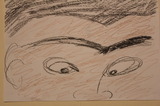
This resource aims to generate ideas and possibilities about how to advance student understanding of logic in writing beyond the notion that logic is always a collection of data points or a reference to facts. Instead of reducing logic to numbers and statements, this source hopes to introduce students and teachers to the existential questions that are always involved in the logical appeals of a text: how do we know what we know and why does it matter?

The activities here work on analysis and synthesis skills. They take canonized text that are often taught at different times in the school year due to their placement in U.S. and world history and ask students to pair them together. A variety of activities and assessments are described or suggested throughout this resource to help students explore the boundaries surrounding certainty and doubt and lived experience.
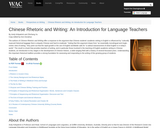
The authors of Chinese Rhetoric and Writing offer a response to the argument that Chinese students' academic writing in English is influenced by "culturally nuanced rhetorical baggage that is uniquely Chinese and hard to eradicate." Noting that this argument draws from "an essentially monolingual and Anglo-centric view of writing," they point out that the rapid growth in the use of English worldwide calls for "a radical reassessment of what English is in today's world." The result is a book that provides teachers of writing, and in particular those involved in the teaching of English academic writing to Chinese students, an introduction to key stages in the development of Chinese rhetoric, a wide-ranging field with a history of several thousand years. Understanding this important rhetorical tradition provides a strong foundation for assessing and responding to the writing of this growing group of students.
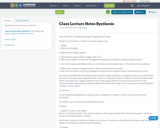
Synthesis of various sources on rhetoric
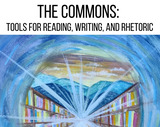
The Commons: Tools for Reading, Writing, and Rhetoric gives instructors and students of college writing courses a single source for information on metacognitive critical reading, rhetorical awareness, and MLA formatting basics as well as interesting and relevant reading and viewing content. Its approach is interdisciplinary, bringing in material from ecology, sociology, psychology, technology, popular culture, political science, cultural studies, and literature. Each essay, website, video, infographic, and poem has been carefully chosen to speak to the Eastern Kentucky University community, but everyone can find something that speaks to our common human experience and our need to communicate and connect with one another.

This textbook is meant for first year English Composition Courses. The text covers the essentials of composition and rhetoric in a recursive manner and introduces research skills.
When you are eager to get started on the coursework in your major that will prepare you for your career, getting excited about an introductory college writing course can be difficult. However, regardless of your field of study, honing your writing skills—and your reading and critical-thinking skills—gives you a more solid academic foundation.
In college, academic expectations change from what you may have experienced in high school. The quantity of work you are expected to do is increased. When instructors expect you to read pages upon pages or study hours and hours for one particular course, managing your work load can be challenging.
The quality of the work you do also changes. It is not enough to understand course material and summarize it on an exam. You will also be expected to seriously engage with new ideas by reflecting on them, analyzing them, critiquing them, making connections, drawing conclusions, or finding new ways of thinking about a given subject. Educationally, you are moving into deeper waters. A good introductory writing course will help you swim.
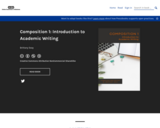
Composition 1: Introduction to Academic Writing was created with the intention of providing a free, comprehensive Composition 1 textbook to the students of Connors State College in Oklahoma. This textbook is a compilation of several OER textbooks and resources with edits, revisions, and additions provided by Brittany Seay. This composition 1 textbook covers academic writing in its most basic definition.
Chapter 1 covers what is academic writing, who does it, and why
Chapter 2 covers the rhetorical modes used in academic writing
Chapter 3 covers rhetorical analysis
Chapter 4 covers the basic parts of a standard academic essay
Chapter 5 covers the academic argument
The last section of the book is a collection of 88 open essays

An introductory course that focuses on sentence and paragraph structure, title development, and writing by method, including narration, description, process, compare/contrast, cause and effect, persuasion, and more. A solid overview of citations and sources, as well as thesis statements and conclusions, is also provided.

Course map for class that teaches first-year students core rhetorical concepts (ethos, pathos, logos, and kairos) by analyzing Taylor Swift’s songs, videos, interviews, and social media posts. Includes learning objectives, assignments, formative feedback, activities, and readings or other resources for a 10-week course and final project.
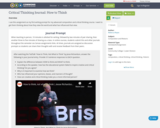
I use this assignment as my first writing prompt for my advanced composition and critical thinking course. I want to get them thinking about how they view the world and what has influenced that view.

A brief overview of how students will learn critical thinking skills in their introductory English college course.